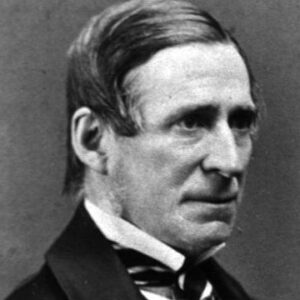Sir James Paget was a well-known British surgeon and physiologist who is widely regarded as a founder of modern pathology. He is best remembered for coining the terms Paget’s disease of the nipple and Paget’s disease of the bone, osteodystrophia deformans. Paget’s Abscess, a type of pus formation in body tissue, is also named after him. He was one of his parents’ numerous children. He was desperate to join the Navy during his adolescence but ultimately chose to become a surgeon. He had to wait several years before being adequately compensated for his dedication and significant contributions to medical science. He was a gifted orator with a sympathetic demeanor who was widely regarded as the field’s finest lecturer. Despite his hectic schedule, he was a man who knew how to enjoy life. With a wicked sense of humor, he relished the opportunity to laugh and have fun. He was also interested in criminal matters in addition to medical research. He was not only a brilliant surgeon, but also an extraordinary human being whose life and work continue to inspire future generations.
Childhood & Adolescence
James Paget was born in Great Yarmouth, England on 11 January 1814 to Sarah Paget, a gifted artist, and Samuel Paget, a brewer and ship owner. He had sixteen siblings, but only eight survived to adulthood.
He attended a local school and majored in mathematics and the classics, including Latin and Greek. His mother was well educated and an accomplished writer, which aided in his development.
He became envious of the attention given to naval officers at the age of 15 and decided to pursue it as a career, which he later described as a “silly wish.”
In 1830, he decided to become a surgeon and apprenticed with Dr. Charles Costerton, a Great Yarmouth surgeon and apothecary. He practiced with him for four and a half years, gaining knowledge of anatomy and botany in the process.
Following his apprenticeship, he enrolled in a two-year study program at St. Bartholomew’s Hospital in London. He established a reputation for being an astute observer through his precise descriptions and also discovered the pathogen that causes Trichinosis, a parasitic disease.
In 1836, with little guidance from medical professors, he passed the Royal College of Surgeons examination and was admitted to practice.
Career of James
Between 1836 and 1843, he endured a difficult period. Despite his superior performance on his examinations, he struggled for seven years as a curator at the College of Surgeons Anatomy Museums.
He was appointed lecturer of anatomy and physiology at the Finsbury Dispensary in 1843, where he also worked as a surgeon for a time. He was also appointed a professor at the Royal College of Surgeons during this time period, where he delivered six lectures on surgical pathology.
He was elected a fellow of the Royal Society in 1851. He had established himself as a renowned pathologist and physiologist. However, the true turning point in his life occurred in 1858, when he was appointed surgeon extraordinary to Queen Victoria, and then surgeon ordinary to the Prince of Wales a few years later.
In 1871, due to illness, he resigned as a surgeon but continued his private practice. He was elected President of the Royal Society in 1875.
In 1877, he published a paper on osteitis deformans, a bone disease. It is widely regarded as a watershed moment in medical history.
Significant Works
He noticed some white specks in the muscle of a cadaver he was dissecting in 1834 while a student at St.
Bartholomew’s. He identified them as worms, Trichina spiralis, ingested through the consumption of unhealthy pork after examining them under a microscope. Through this discovery, he made a significant contribution to the nation’s health improvement.
He first described osteitis deformans in 1877, a chronic bone disease that results in progressive bone deformity over time. At the time, it was a remarkable feat of observation, given that it was diagnosed prior to the invention of X-rays.
He also discovered Paget’s nipple disease and abscess. He was the first to advocate for tumor removal rather than amputation in cases of myeloid sarcoma.
Among his most well-known works are ‘Lectures on Tumors’ (1851) and ‘Lectures on Surgical Pathology’ (1853). (1853). He founded a hospital in London in 1888.
Awards and Accomplishments
He was appointed extraordinary surgeon to Queen Victoria in 1858. He was appointed surgeon ordinary to the Prince of Wales in 1863.
He was elected President of the Royal College of Surgeons of England in 1875. In 1877, Queen Victoria bestowed upon him a baronetcy, which he proudly accepted. He was elected President of the Pathological Society of London in 1887.
Personal History and Legacies
He married Lydia North, the daughter of Rev. Henry North, despite his family’s opposition, which characterized him as irresponsible and disloyal. In 1844, after a seven-year courtship, he married her.
They had a happy family blessed with six children, the majority of whom made significant contributions to history through their accomplishments.
He saw very few patients after he retired at the age of 64 and devoted the majority of his time to writing. He spent a great deal of time improving medical education and examination, as well as encouraging public speaking. He died in London on 30 December 1899, just before the turn of the twentieth century.
Estimated Net Worth
When James Paget died, he had a net worth of $10 million dollars. James Paget’s total net worth places him among the wealthiest surgeons in the United Kingdom. Everything of value is included in one’s net worth: money, real estate, and houses, for example.
His income-to-net-worth ratio was 0.2. James Paget has the highest net worth in the category of Surgeons. He amassed such wealth at the age of 85.


